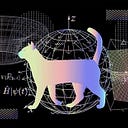How the Schrödinger Wave Function Bends Reality
The study of quantum mechanics unveils a reality teeming with uncertainty and counter-intuitive phenomena. It takes us into the realm of subatomic particles where the rules of the game are completely different from those we are accustomed to.
The Schrödinger equation, a fundamental equation in quantum mechanics, provides us with a comprehensive tool to navigate this quantum world through its wave function. In this article, we will dissect the wave function, how it’s used to predict probabilities, and how we engage in its measurement.
The Schrödinger Equation and the Wave Function
At the heart of non-relativistic quantum mechanics lies the time-dependent Schrödinger equation, given by:
Here,
- Ĥ is the Hamiltonian operator (representing the total energy of the system),
- ψ is the wave function of the quantum system,
- i is the imaginary unit,
- ħ is the reduced Planck’s constant (h-bar), and
- ∂ψ/∂t is the partial derivative of the wave function with respect to time.
The solutions to the Schrödinger equation are wave functions that provide all conceivable information about a quantum system. It’s important to note that this wave function is complex-valued and cannot be directly measured.
The squared magnitude of the wave function (also called norm-squared), offers a probability density function for the position of a particle.
This suggests that, at a given time t, the particle has a probability density |ψ(x, t)|² of being located at position x. This underpins the probabilistic interpretation of quantum mechanics.
Quantum Measurement and the Collapse Postulate
Unlike classical mechanics, where we can simultaneously measure multiple properties (like position and velocity) of a system without disturbing it, quantum mechanics poses a distinctive feature — measurement disturbs the system. A measurement of an observable quantity in quantum mechanics is associated with a particular Hermitian operator.
If we are measuring an observable A, corresponding to operator Â, on a quantum system described by a state |ψ⟩, then post-measurement, the state of the system “collapses” to one of the eigenstates of Â. This is known as the collapse postulate or projection postulate.
For an operator  with eigenvalues a_n and corresponding eigenstates |n⟩, if the system is in state |ψ⟩ = Σ cn|n⟩, the probability of obtaining the eigenvalue a_n upon measurement is |cn|².
What are Hermitian Operators?
In the context of quantum mechanics, a Hermitian operator is a linear operator that is equal to its own adjoint. This mathematical property ensures that all eigenvalues of a Hermitian operator are real numbers, which is a crucial requirement for the corresponding physical quantities they represent.
Mathematically, an operator A on a complex Hilbert space H is said to be Hermitian or self-adjoint if it satisfies the condition:
where A† denotes the adjoint of the operator A. The adjoint of an operator A is defined as the operator that satisfies:
for all vectors |ψ⟩ and |φ⟩ in the Hilbert space, where ⟨ψ|φ⟩ denotes the inner product of |ψ⟩ and |φ⟩.
In terms of matrices, which are often used to represent operators in finite-dimensional Hilbert spaces, an operator A is Hermitian if its matrix representation is equal to its conjugate transpose. If A is a matrix with complex entries, A is Hermitian if for all i and j:
where A*_ji is the complex conjugate of A_ji.
A critical property of Hermitian operators is their spectral theorem: a linear operator on a finite-dimensional inner product space is Hermitian if and only if there exists an orthonormal basis for the space consisting of eigenvectors of the operator. Moreover, the corresponding eigenvalues are real. This is crucial in quantum mechanics, as the eigenvalues of an operator represent the possible results of a measurement of the corresponding observable.
Examples of Hermitian operators in quantum mechanics include the Hamiltonian operator, the position operator, and the momentum operator.
Quantum Tomography: Reconstructing the Wave Function
In spite of the wave function’s crucial role, it remains unobservable. We cannot take a quantum snapshot of a particle and directly determine its wave function. What we can do, however, is perform quantum state tomography. This technique allows us to reconstruct the wave function by making several different types of measurements on identically prepared systems.
The process involves the use of a wide range of observables (each associated with a specific Hermitian operator). This process generates a set of probability distributions for these observables. Through a comprehensive analysis of these distributions, one can reconstruct the quantum state or wave function for the system.
Despite being a complicated procedure requiring repeated measurements and significant statistical analysis, quantum tomography serves as a practical way to gain deeper insights into the wave function.
The Measurement Problem: An Unresolved Quantum Enigma
The notion of wave function collapse is a subject of ongoing debate and lies at the heart of the measurement problem in quantum mechanics. This quantum measurement problem arises due to two contradictory features of quantum mechanics:
- The Schrödinger evolution, which is a deterministic and continuous process, and
- The measurement process, which is probabilistic and discontinuous.
While various interpretations and theories (like the many-worlds interpretation or the Bohmian mechanics) try to address this issue, there is no universal agreement yet. Thus, the measurement problem remains one of the most challenging and intriguing issues in the foundations of quantum mechanics.
The quantum world, with its wave functions, superpositions, and probabilistic measurements, challenges our classical intuition and demands a radical rethinking of concepts like reality and determinism. Even as we push the boundaries of quantum mechanics to build quantum computers and quantum communication systems, we find ourselves still grappling with fundamental questions about the very nature and interpretation of the wave function and the act of measurement. This shows us that the study of quantum mechanics is, indeed, an exploration that is as rich in practical technological advances as it is in profound philosophical questions.

